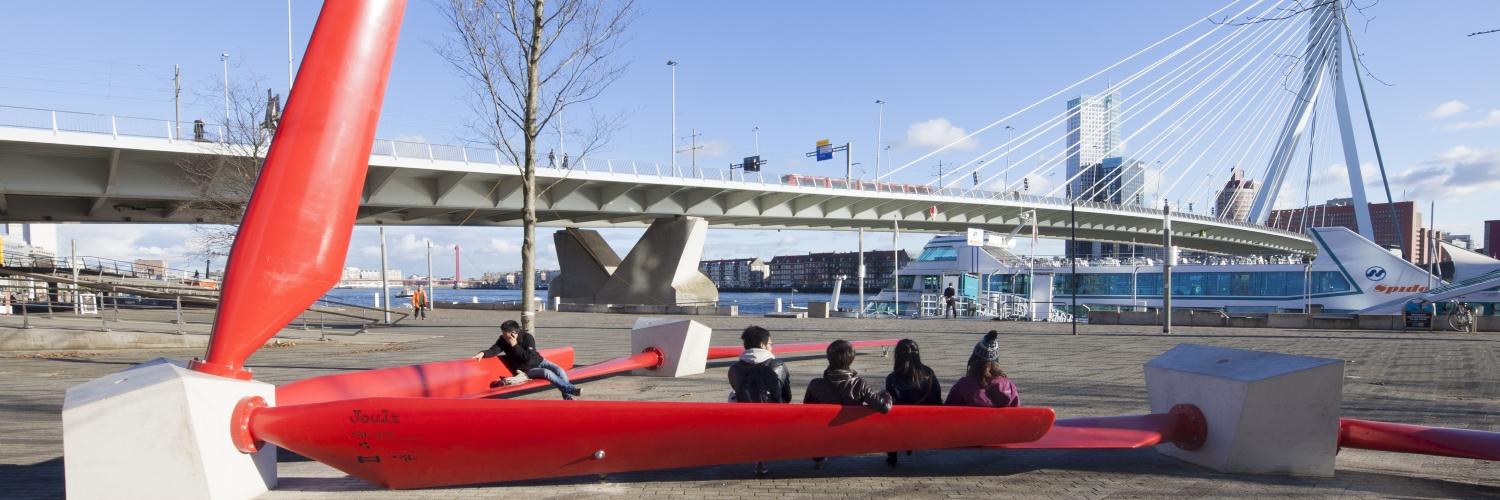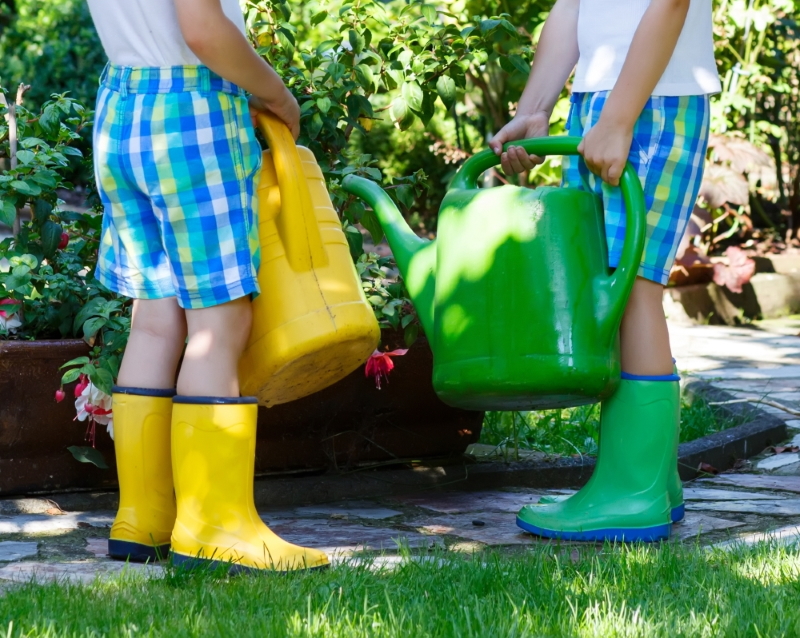
News
18 October 2017
Measuring actual recycling will boost quality
Discrepancy between collection rate and recycling performance
How to calculate national recycling performance is a controversial issue in the EU. For plastic and wood waste, the Dutch waste sector argues for measuring what is actually recycled. That would boost the quality and sales of recycled plastic and the reuse of wood.
Many EU member states appear to take the easy approach to calculating their recycling performance and simply add up the tonnage of all their separately collected recyclable waste. The Netherlands does this too. For many waste streams, such as glass, paper and cardboard, food and green waste, this is entirely justified as the post-collection processing of these wastes involves relatively little loss of material. However, this is not the case for two other streams of municipal residual waste: plastics and wood. Processing the different types of plastic involves considerable material losses, while much of the wood separated from municipal residual waste is used for energy recovery. Nevertheless, both streams count towards the recycling statistics. But is this justified?

The Dutch waste sector wants the measurement point for plastic recycling to be the output of recycled granulate
Measurement point for plastic recycling
The discrepancy between collection rate and recycling performance has not gone unnoticed in Brussels. As part of its Circular Economy Package the Commission is working on a harmonised calculation method for recycling. The key issue is where the point of measurement should be for the recycling of municipal waste streams. Opinions on this are divided in the Brussels circuit. The Dutch Waste Management Association has recently determined its position on this for plastic and wood waste.
True picture
The DWMA wants the EU to set a measuring point for both streams as far down the material chain as possible. For plastic that would be the granulate leaving the recycling plant and for wood it would be the wood delivered for material recycling. 'If you really want to make a difference in the material chain, transparency is a must,' says Wieger Droogh (SUEZ Netherlands), DWMA board member and chair of the Policy and Strategy Committee. 'The point of measurement should be where it gives the truest possible picture. If you put the measurement point further down the recycling pathway, you get a more accurate picture of the efficiency of each step and the material loss rate. This makes it possible to improve the quality of the material chain. The parties in the chain will have to cooperate on making their processes more efficient to improve the quality of the material streams. The resulting recycling products will be of higher quality and will command a higher price. The current method is not future-proof, because there is insufficient incentive to work on high-quality recycling, and hence on quality, which doesn't do justice to the whole idea of the circular economy.'
Wieger Droogh (SUEZ Netherlands):
"The point of measurement should be where it gives the truest possible picture."
EU institutional positions
The European Parliament, the European Commission and the European Council are currently holding interinstitutional 'trilogue' negotiations on a new calculation methodology for recycling. Their positions differ:
- The European Commission wants a single harmonised calculation method that is a true representation of what is actually recycled. The Commission proposes measuring the recyclate as it enters the final stage of recycling where the recycling product is made, for example where plastic granulate is produced.
- The European Council wants the measuring point to be where the sorted waste streams first enter the recycling process. This means that the residual material separated from the sorted waste must be subtracted from the total.
- The European Parliament is the most ambitious of the three institutions and wants to count only the output of recycling processes that is reused in new products. This position is not realistic and is not supported by the European waste and recycling industries.
Plastic
The plastic recycling process involves sorting, shredding, cleaning, melting and extruding. Material is lost in each step of this process. It is only when the material has been processed into ready-for-use granulate that the recycling process is complete and there is no further loss of material. 'The granulate is a finished product comparable with new plastic granules, which is why this is the most suitable measuring point,' explains Robert Corijn, marketing manager for the Dutch company Attero and responsible for marketing the company's secondary raw materials. 'Only this gives you a realistic figure for the amount of recycled plastic.'
Robert Corijn (Attero):
"If we measure the actual recycled materials, everyone in the waste chain will be aware of how big the losses are."
Losses
The need to reduce material losses is obvious. The spectacular growth in the collection of plastic packaging waste from households has dramatically increased the volume of plastic waste going to recycling - but contamination levels are far too high. 'Our composition analyses reveal that levels of non-plastic packaging and other residues as high as 30 to 40% are unfortunately no exception,' says Corijn. 'If we measure the actual recycled materials, everyone in the waste chain from collection on will be aware of how big these losses are. The need to reduce these losses will be felt at every step and value chain participants will be stimulated to take action and improve the quality of their own processes as much as possible. It will encourage innovation and cooperation throughout the chain.'

The Dutch waste sector wants the measurement point for wood to be for material recycling
Waste wood recycling
It was always expected that the waste wood stream would almost entirely be recycled, but this is not the case. In the Netherlands about 50% of municipal waste is recycled. However, the actual recycling performance should be 4% lower because of the loss of wood from the recycling process. All the waste wood collected from households (400,000 tonnes per year) is counted as recycling, even though it is not reused, but is used for energy recovery. That is why the Dutch waste sector wants the measurement point to be for materials recycling - reuse of the wood.
Measuring further down the chain = more ambitious recycling targets
A calculation methodology that reflects actual recycling will have consequences for the waste policies of the EU member states, because the recycling targets will be much more ambitious. Wieger Droogh (SUEZ Netherlands): 'At the moment, the member states achieve certain recycling percentages for household plastic packaging waste. If the target percentage is to be measured further down the recycling chain, material losses will have to be taken into account. The true recycling rate will therefore be significantly lower, and this means that the targets will have to be adjusted as well. National governments will have to explain this carefully. The last thing we want is negative reactions in the media saying that the targets are being lowered again, whereas the real aim is a higher grade of recycling.'
Aiming for reuse
'The question is whether the government can encourage the market to go for recycling under all conditions,' says Droogh. 'Making the measurement point the supply of waste wood to industrial customers for material reuse could achieve this. The target for wood should be reuse as a raw material that gives it a second life. Our ambition is to turn waste wood into new wood. We want to kick-start recycling, stimulate the wood industry and reduce the amount of wood used for energy recovery - a use which we do not classify as recycling. This will automatically lead to the recycling of wood. At the same time, we note that much poor quality wood is converted into energy, as indeed it should be.' According to Droogh, making the materials recycling stage the point of measurement will stimulate more innovation. 'Waste wood used in the manufacture of chipboard is no longer available for use as a new product, and so we will have to find higher quality applications for turning wood chips into a new product. We will have to move towards this type of circularity.'
Unjustified criticism of poor traceability
There is considerable criticism from within the member states that measuring recycling further along in the process will make it more difficult to trace the sources of the waste streams. For example, plastic recyclers use waste streams from several countries as well as some virgin material and plastic feedstock from the industry. This makes measuring recycling further down the chain a complex business. Wieger Droogh (SUEZ Netherlands) presents a counter argument. 'What is important now is that we don't focus on what might go wrong, but become inspired by what we can achieve in Europe. The key thing is to create a broad market for recycled raw materials. The emphasis should be on quality, because the market demands secondary raw materials of a higher quality.'
Author
Pieter van den Brand - @copyright
Translation
Derek Middleton
